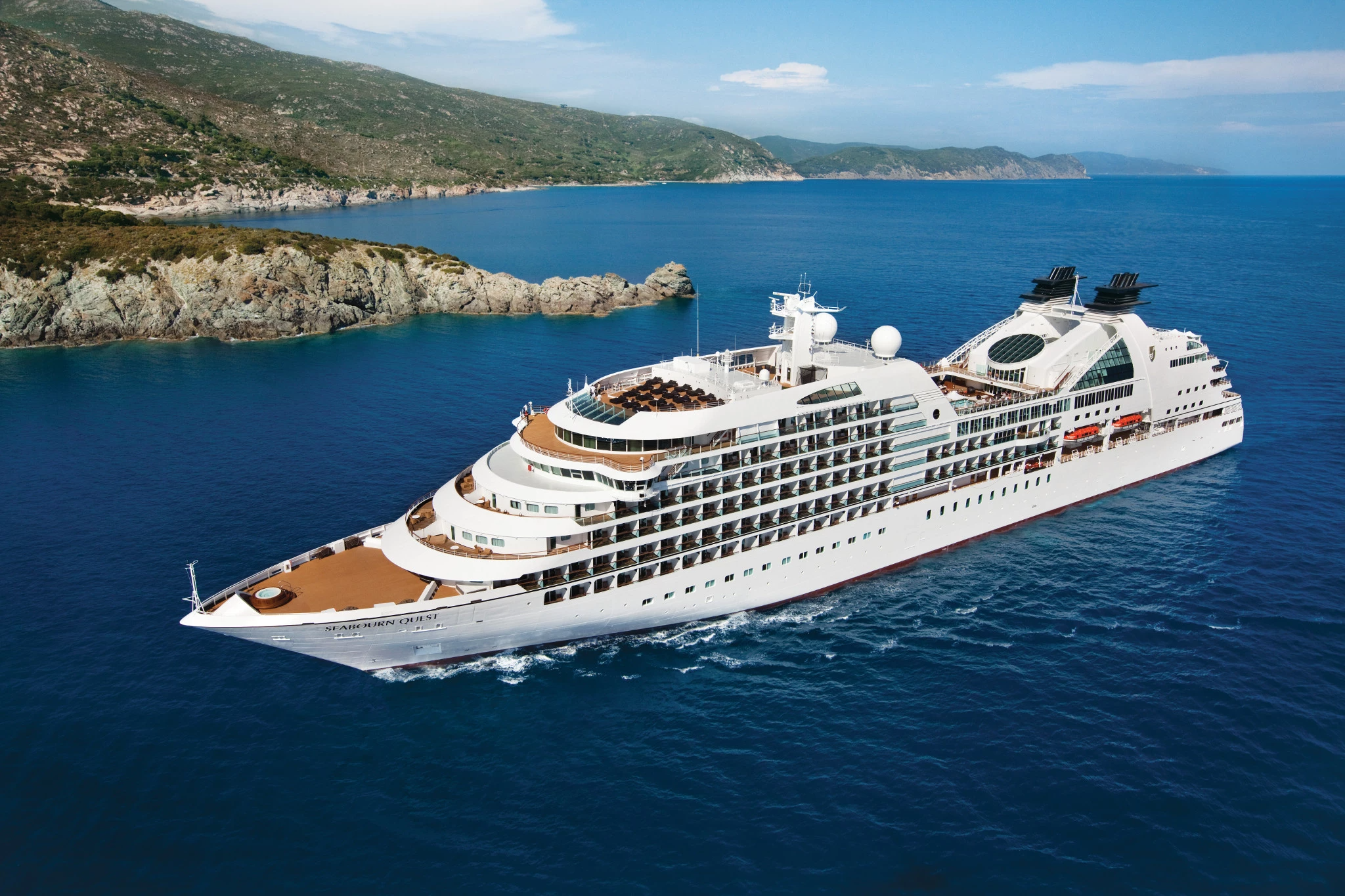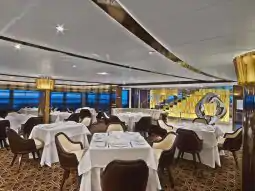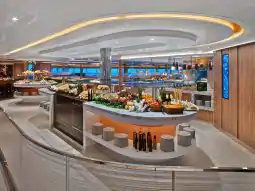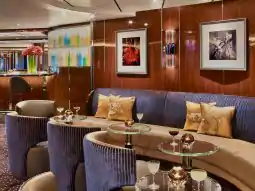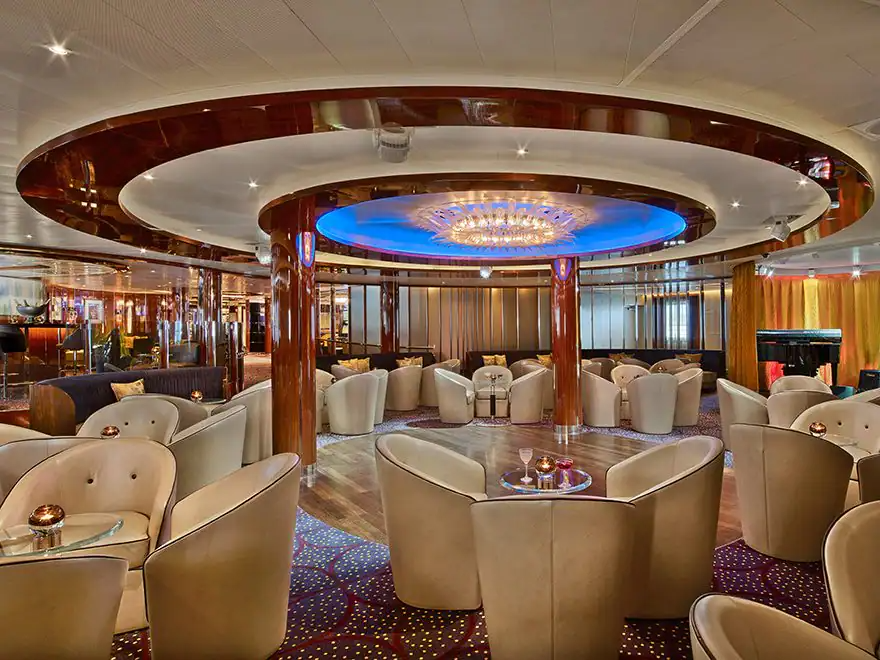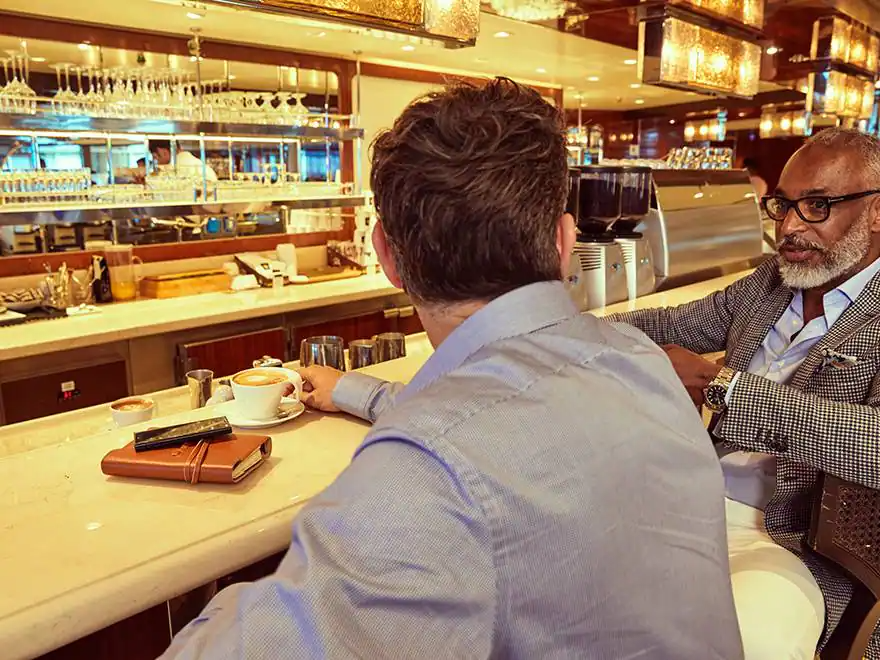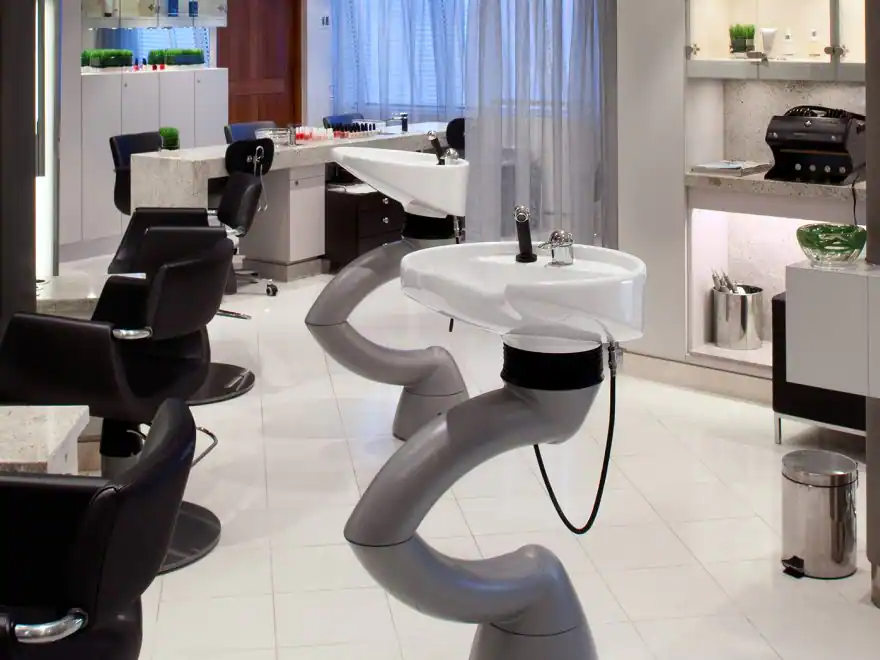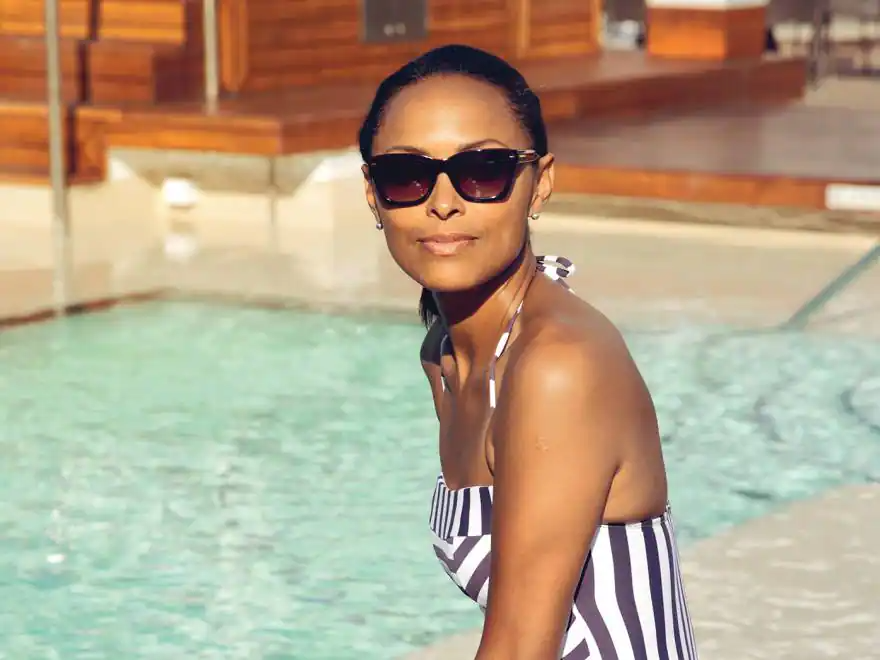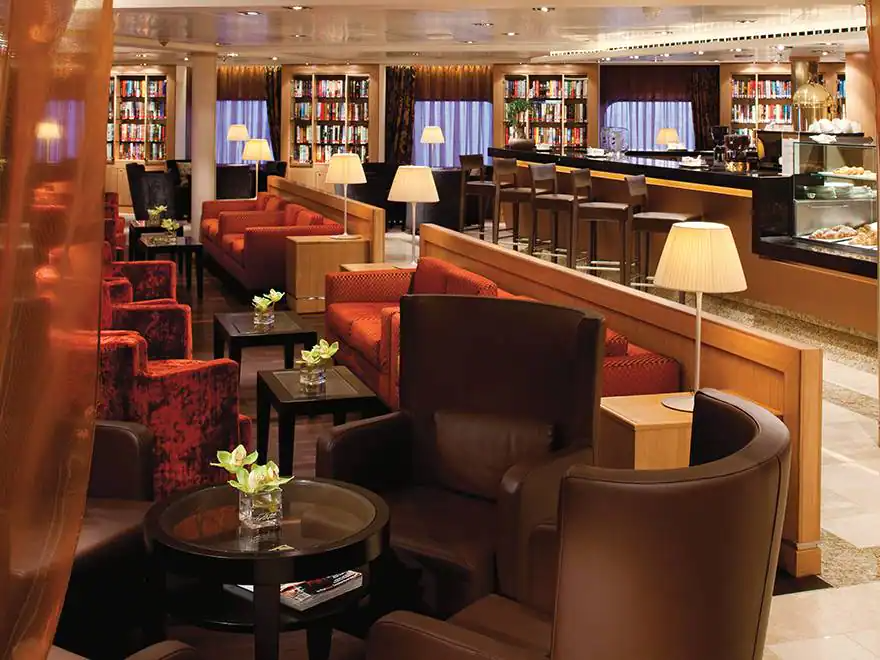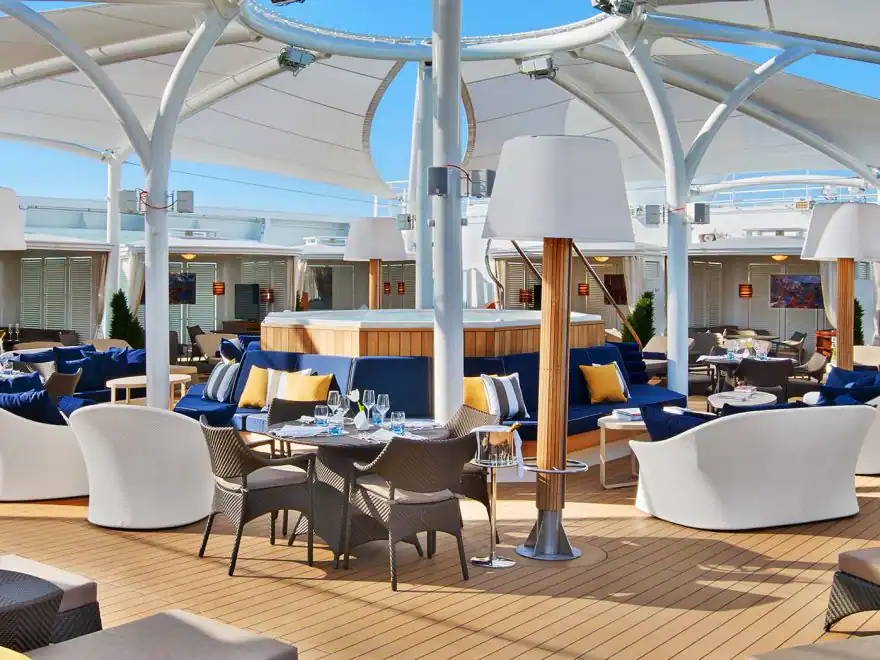*Exclusief Calamiteitenfonds à € 2.50 per reservering en SGR bijdrage à € 5,- per persoon.
Uw vaarschema
“Tot het midden van de 19e eeuw was Japan geïsoleerd, afgesloten van de rest van de wereld. Yokohama was niet meer dan een vissersdorp. Maar in 1853 eiste de Amerikaanse marineofficier Matthew Perry dar het land openging voor buitenlandse handel, en Yokohama werd voor altijd veranderd. De stad ontpopte zich al snel tot een internationaal handelscentrum, en terwijl hij vandaag de dag vaak wordt overschaduwd door Tokio, blijft hij een van Japan’s levendigste, internationale bestemmingen. In Yokohama vindt u diverse microbrouwerijen en restaurants met een internationale kaart. De stad is echt anders dan vele andere Japanse steden.
Vanuit Yokohama bent u snel in het rustige Kamakura, waar de op twee na grote bronzen Boeddha van Japan staat en waar zich het belangrijke Shinto-heiligdom Tsurugaoka Hachimangu bevindt. Ga naar het nationaal park Hakone op een onbewolkte dag en u zult beloond worden met prachtig uitzicht op de majestueuze berg Fuji.”
The Amami Islands is an archipelago in the Satsunan Islands, which is part of the Ryukyu Islands, and is southwest of Kyushu. Administratively, the group belongs to Kagoshima Prefecture, Japan.
“Naha, de hoofdstad en de grootste stad van de prefectuur Okinawa in Japan, dient ook als het belangrijkste politieke, economische en transportcentrum van de regio. Met een fascinerend verleden als hoofdstad van het Koninkrijk Riukiu en een functionerende haven die dateert uit de 15e eeuw, slaagt deze stad van 300.000 inwoners erin om zowel een boeiende als een relaxte stad te zijn.
Omdat de stad tijdens de Tweede Wereldoorlog grotendeels werd verwoest, zijn er hier niet veel oude gebouwen; toch hebben een paar gerestaureerde overblijfselen uit het tijdperk van het Koninkrijk Riukiu wel historisch belang, waaronder Shuri Castle, het koninklijk paleis en zijn buitengewone tuinen. Beide zijn toegevoegd aan een lokale groep die gezamenlijk staan vermeld op de Werelderfgoedlijst van UNESCO. Andere legendarische locaties zijn onder andere het Koninklijk Mausoleum (graftombes in grotten) en de Shurei Gate, die zo prachtig is dat de afbeelding wordt weergegeven op het 2.000-yenbiljet.
Er zijn ook enkele moderne hotspots, namelijk Kokusai Street, met bijna twee kilometer (1.25 mijl) aan winkels, cafés en restaurants, en de nabijgelegen Makishi openbare markt, waar tientallen voedselverkopers heerlijke lekkernijen aanprijzen. Als u er verder weg opuit wilt, is Naha het ideale startpunt voor excursies naar de rest van Okinawa.”
“Miyako is een Noord-Japanse stad die is gelegen in de regio Iwate Prefecture, de regio Tohoku. De stad is te vinden in de centrale regio van de prefectuur Iwate. Op deze locatie wordt het in het oosten begrensd door de Stille Oceaan, waar de monding van de Hei-rivier de Miyako-baai voedt. Sommige delen van de kust van de stad vallen onder de jurisdictie van het Sanriku Fukko National Park. De stad heeft een rijke geschiedenis die teruggaat tot de Jomon-periode toen het deel uitmaakte van de oude Mutsu-provincie. Het werd aanvankelijk bewoond door de Emishi-mensen voordat het onder de controle kwam van de Yamato-dynastie in de Heian-periode.
*Natuur- en natuurliefhebbers mogen de kans niet missen om het Sanriku Fukko National Park te bezoeken, dat zich over een behoorlijk stuk van de Japanse kustlijn uitstrekt. Het park is in 2013 aangelegd in het midden van de Tohoku-aardbeving in 2011 en de nasleep van de tsunami.
*Bezoekers mogen ook de kans niet missen om het prachtige Jodogahama-strand te bezoeken, dat niet ver van het stadscentrum ligt en wordt beschouwd als een beroemde toeristische trekpleister.
*De stad herbergt een zeer levendige visserij-industrie die zijn vis haalt uit de kust van Sanriku. Bezoekers moeten een bezoek brengen aan de Miyako-vismarkt om een glimp op te vangen van hoe de lokale vismarkten in de regio werken.
*Bezoekers moeten een kleine boottocht maken door de Hachinoheana, die ook bekend staat als de Blauwe Grot. De tour kan alleen worden gedaan als het water kalm is.”
Keelung is the second largest port in Taiwan, and a booming trade industry has turned it into a very prosperous city and international seaport. However, the main reason for calling here is to travel inland to visit the contemporary metropolis of Taipei. Not long ago, the scenic valley of the Tanshui River was home to rice and vegetable farmers, but today it is the site of Taiwan’s bustling center of culture, commerce and government.
Keelung is the second largest port in Taiwan, and a booming trade industry has turned it into a very prosperous city and international seaport. However, the main reason for calling here is to travel inland to visit the contemporary metropolis of Taipei. Not long ago, the scenic valley of the Tanshui River was home to rice and vegetable farmers, but today it is the site of Taiwan’s bustling center of culture, commerce and government.
Closer to Taiwan than to Japan’s main islands, the Yaeyama group is a volcanic archipelago known (though not widely) for its coral reefs and clear waters. Ishigaki is the main hub, and attracts mostly Japanese visitors with inside information about the Caribbean-like appeal of the place. A part of the Okinawa Prefecture, the island is ringed by beaches that vary from sandy expanses to whole strands made up entirely of broken, bleached and tumbled coral. The land itself is mostly given over to palm forests and pineapple plantations. Capes such as Hirakubozaki on the west side, or Uganzaki at the northern tip, are marked by lighthouses and offer nice views. At Kabira Bay no swimming is allowed, due to culture of black pearls, but glass-bottom boats offer views of the colorful sea life. Other beaches welcome snorkelers, swimmers and windsurfers.
Nagasaki, gelegen in het noordwesten van Kyushu en het op twee na grootste eiland van Japan, is een van de meest kosmopolitische havensteden van het land en beschikt over een aardige toeristische infrastructuur, een fascinerend verleden dat teruggaat tot de vroege 7e eeuw en een pittoreske haven die al sinds de 16e eeuw actief is. Met ongeveer 500.000 inwoners is de stad druk maar toch ontspannend. Er zijn veel diensten, winkels en restaurants, maar ook verschillende culturele en historische attracties die gemakkelijk te voet en via het openbaar vervoer bereikbaar zijn. Bezoek zeker het vredespark van Nagasaki en het Atoombommuseum, die in het thema staat van de verschikkelijke bombardering van de stad tijdens Wereldoorlog II en een indrukwekkend pleidooi is voor wereldvrede. Foodies kunnen genieten van het uitgebreide smaakaanbod in Chinatown en de Shianbashi Gourmet-straat. Als u met kinderen reist, dan is Huis Ten Bosch, een pretpark naar model van de middeleeuwse Nederlandse stad, een leuke activiteit. Kijk ook uit voor populaire jaarlijkse evenementen zoals het Kunchifestival in oktober en het winterlantaarnfestival van Nagasaki.
Capital of Japan’s southernmost prefecture, Kagoshima faces the Kinko-wan Bay and the active Sakurajima Volcano. Kagoshima played an important role in Japanese history, starting in the early 7th century when Bounotsu Port was a base for trading with China and other Asian nations. The region, formerly known as Satsuma was dominated by 29 generations Shimazu lords for over 700 years until the 1867 Meiji Restoration. Between the 9th and 15th centuries, Satsuma was an important trading port with the countries of east Asia, as well as Europe, becoming one of Japan’s earliest points of contact with the West.
Shimizu, dat over het algemeen wordt beschouwd als een van de mooiste havens van Japan, biedt op een heldere dag een ongeëvenaard uitzicht op Mount Fuji en heeft het mooiste Miho-no-Matsubara pijnbomenbos op de achtergrond (beide staan op de werelderfgoedlijst van UNESCO). Het milde klimaat van de haven en de rijke cultuur, zeer verbonden met de omliggende Shizuoka-regio, maken het tot een van de beste bestemmingen van het land om te gaan bekijken. Een aantal van de belangrijkste bezienswaardigheden zijn Kunozan Toshogu Shrine, door de Japanse overheid bestempeld tot nationaal erfgoed, Sumpu Castle (gebouwd in 1586) en Shizuoka Sengen Shrine, waar de krijgsheer Tokugawa Ieyasu, die regeerde in de Edo-periode, zijn volwassenwordingsceremonie hield. De shoguns van Tokugawa regeerden Japan 250 jaar, tot 1867. De hele regio biedt voldoende pittoreske kustlandschappen, theeplantages en een rijkdom aan Boeddhistische tempels en Shinto-altaren, terwijl de haven zelf, beroemd in de twintigste eeuw vanwege de thee-export, vandaag de dag het meest bekend is om de wonderbaarlijke tonijnvangst; de grootste in Japan. In de vele fantastische restaurants in de haven kunt u hiervan proeven, samen met andere lokale heerlijkheden zoals sakura shrimp en shirasu (jonge haring).
“Tot het midden van de 19e eeuw was Japan geïsoleerd, afgesloten van de rest van de wereld. Yokohama was niet meer dan een vissersdorp. Maar in 1853 eiste de Amerikaanse marineofficier Matthew Perry dar het land openging voor buitenlandse handel, en Yokohama werd voor altijd veranderd. De stad ontpopte zich al snel tot een internationaal handelscentrum, en terwijl hij vandaag de dag vaak wordt overschaduwd door Tokio, blijft hij een van Japan’s levendigste, internationale bestemmingen. In Yokohama vindt u diverse microbrouwerijen en restaurants met een internationale kaart. De stad is echt anders dan vele andere Japanse steden.
Vanuit Yokohama bent u snel in het rustige Kamakura, waar de op twee na grote bronzen Boeddha van Japan staat en waar zich het belangrijke Shinto-heiligdom Tsurugaoka Hachimangu bevindt. Ga naar het nationaal park Hakone op een onbewolkte dag en u zult beloond worden met prachtig uitzicht op de majestueuze berg Fuji.”
“Miyako is een Noord-Japanse stad die is gelegen in de regio Iwate Prefecture, de regio Tohoku. De stad is te vinden in de centrale regio van de prefectuur Iwate. Op deze locatie wordt het in het oosten begrensd door de Stille Oceaan, waar de monding van de Hei-rivier de Miyako-baai voedt. Sommige delen van de kust van de stad vallen onder de jurisdictie van het Sanriku Fukko National Park. De stad heeft een rijke geschiedenis die teruggaat tot de Jomon-periode toen het deel uitmaakte van de oude Mutsu-provincie. Het werd aanvankelijk bewoond door de Emishi-mensen voordat het onder de controle kwam van de Yamato-dynastie in de Heian-periode.
*Natuur- en natuurliefhebbers mogen de kans niet missen om het Sanriku Fukko National Park te bezoeken, dat zich over een behoorlijk stuk van de Japanse kustlijn uitstrekt. Het park is in 2013 aangelegd in het midden van de Tohoku-aardbeving in 2011 en de nasleep van de tsunami.
*Bezoekers mogen ook de kans niet missen om het prachtige Jodogahama-strand te bezoeken, dat niet ver van het stadscentrum ligt en wordt beschouwd als een beroemde toeristische trekpleister.
*De stad herbergt een zeer levendige visserij-industrie die zijn vis haalt uit de kust van Sanriku. Bezoekers moeten een bezoek brengen aan de Miyako-vismarkt om een glimp op te vangen van hoe de lokale vismarkten in de regio werken.
*Bezoekers moeten een kleine boottocht maken door de Hachinoheana, die ook bekend staat als de Blauwe Grot. De tour kan alleen worden gedaan als het water kalm is.”
This important port on Japan’s northern Hokkaido Island was the first to be opened to European and American trade. The result of this is a trove of Western-style buildings in the suburb of Motomachi that gives the impression of a movie set. The bell of the distinctive Haristo Greek Orthodox church is designated one of Japan’s official treasured “100 soundscapes.” Hokkaido is famous for its hot springs, much beloved by the Japanese. Yunokawa Hot Spring enjoys a commanding view of the sea, and its botanical garden is home to the Japanese macaques called “snow monkeys” because of their habit of soaking in the hot springs during the northern winter. Goryokaku is a 150-year old star fortress that holds the Magistrate’s Office, an excellent example of traditional Japanese architecture. Get a panoramic view from the observation platform atop the Goryokaku Tower.
Blessed by a protective range of mountains and a relatively warm ocean current, Kushiro gets less than a third of the winter snow of its Hokkaido neighbor Sapporo, and twice as much sunshine as the nearby Kuril Islands. Thus it is an important reliably ice-free port during the winter. Like all of Japan, it is riddled with semi-active geothermal features and occasionally rattled by tremors. Scenic Lake Akan is ringed by hot springs. It also has an Ainu Koten museum with a replica village and folklore performances of the indigenous Hokkaido people. The Japanese Crane Reserve is a good place to see breeding populations of these large and graceful birds, so respected by the Japanese. The city encompasses Japan’s largest wetland, and the Kushiro City Marsh Observatory has a boardwalk to see it, as well as the Fureai Horse Park which offers equestrian tours into the forest.
The largest of the Aleutian Islands, Kodiak is also Alaska’s largest island the second largest in the United States. Although occupied by native people for some 7,000 years, it languished in relative obscurity until the Second World War, when it housed as many as 25,000 troops. Fort Abercrombie, once the major center of North Pacific operations, today is a State Historic Park and a good place to learn the history. At the other end of the road system is the United States Coast Guard’s largest base, with a fleet of orange and white watercraft and aircraft that serves the Alaskan fishing fleet and other shipping and maritime activities in the Pacific area. Kodiak harbor is seasonally home to a fleet of some 650 fishing vessels, including huge trawlers, long-line and crab boats. Fishing is also a popular draw for visitors, but they also are attracted by opportunities to view and photograph local birds and wildlife, including the island’s massive brown bears, the males of which weigh as much as 1,500 pounds and stand ten feet tall. In the town, the fur warehouse originally built by the Russian American Company in 1808 is now the Baranov Museum, the oldest standing building in Alaska.
VIEW CRUISES
“Bevroren steile rotsen lopen uit in mossige bossen en een 457 meter diep (1.500 voet diep) fjord van dit Werelderfgoed. Dit is tevens een van de grootste biosfeer reservaten ter wereld. Gesteente, ijs en water blijven op elkaar botsen en vormen een spectaculair landschap dat het kroonjuweel is van de natuurlijke wonderen van zuidoost Alaska.
De eerste Europese ontdekkingsreiziger in dit gebied zag niets van al dit fraais, maar met een goede reden. Toen kapitein George Vancouver hier in 1794 heen vaarde, bestond het gebied voornamelijk uit een enorm schild van ijs, meer dan 1.200 meter (3.937 voet) dik. In een van de snelste afnames ooit vastgelegd, slonken de gletsjers 105 kilometers (65 mijl) rond 1916. Het door de gletsjer geplette landschap herstelt zich nog steeds en stijgt 30millimeter (1.18 duim) per jaar. U kunt deze wedergeboorte met eigen ogen zien: Een regenwoud met verschillende soorten sparren en dennenbomen ontspruit aan de monding van Glacier Bay. Verder naar het noorden vertoont het recent blootgelegde landschap scherpere rotswanden en minder vegetatie. Het is echter voldoende voor de terugkeer van wilde dieren, van adelaars tot beren, elanden en bultruggen.
Het nationaal park is het hele jaar geopend, maar de meeste bezoekers geven de voorkeur aan de warmere periode van eind mei tot begin september. Zelfs in de zomer moet u voorbereid zijn op elk weertype, —vooral regen! Neem een muts, wol of fleece kledinglagen, een warme jas en waterproof uitrusting mee als u het landschap vanaf het open dek van uw schip wilt bewonderen.”
A stroll through the streets and National Historic Park of Sitka is a glimpse into its unique and colorful past. A blend of Tlingit and Russian cultures defines this first capital of Alaska. Although fish canning and gold mining were the initial catalysts for growth in Sitka, the construction of an air base during World War II truly paved the way for Sitka to come into its own. One of Sitka’s most intriguing structures is the Cathedral of Saint Michael, built in 1848 to honor a Russian Orthodox bishop.
Sitka’s history begins thousands of years ago with the Tlingit people and their use of the land for sustenance and spirituality. Old Sitka, located just north of the present-day settlement, was founded by Russian-American Company trader Alexander Baranov in 1799. Originally named Novo-Arkhangelsk (New Archangel) under Russian rule, its name was changed to Sitka after Alaska was purchased by the United States in 1867. Sitka is a Tlingit word meaning ‘by the sea.’
Decision Passage is the western end of the Sumner Strait, which runs through the Alexander Archipelago into the Pacific Ocean in Southeastern Alaska, bounded on the north by Kuiu Island and Cape Decision, the location of a 1932 lighthouse. This is the route your ship takes when coming from or going to the colorful historic community of Sitka on the west coast of Baranof Island, which was originally the Russian fortress town of New Archangel.
Ketchikan is a picturesque coastal town with a colorful frontier history, standing at the southern entrance to Alaska’s famed Inside Passage. It began as a salmon cannery in 1885, built by company employee Mike Martin at the mouth of Ketchikan Creek. Once dubbed the ‘Canned Salmon Capital of the World,’ today government, commercial fishing, and tourism are its main industries. The renowned Creek Street, perched on stilts along the mouth of the creek, would bring lasting infamy to the area for the red-light district that burgeoned there during the Gold Rush.
The town’s site first served as a camp for Tlingit people, and for thousands of years this has been their home. Their rich culture is being preserved to this day. A visit to Ketchikan is not complete without visiting one or all of Native American sites such as Totem Bight State Park, Potlatch Park, Saxman Native Village and the Totem Heritage Center. Together, these locations comprise the world’s largest collection of standing Native American totem poles.
VIEW CRUISES
The upper latitudes of North America’s Pacific Coast are blessed with a long strand of islands scattered just offshore of the mainland. These islands provide shelter from the swells generated across the expanse of the world’s largest ocean, and offer one of the most scenic passages for ships to be found anywhere on the globe. Stretching from Washington State’s Puget Sound northward through British Columbia, Canada onward to the Panhandle of Southeast Alaska, it threads between forested islands and coastal mountain ranges, encompassing a total of over 45,000 miles of coastline, thousands of islands and innumerable coves. It is comprised of the Strait of Georgia, Johnstone Strait, the more open Hecate Strait near the Haida Gwai (formerly Queen Charlotte Islands), Fitz Hugh Sound, and the Princess Royal and Grenville Channels. These waterways are subject to tidal currents with variable velocity resulting from their restricted channels. At the northern end, diurnal tides can change the sea level by as much as 30 feet (9 meters), underlining the importance of using knowledgeable pilots during any passage. A wide variety of vessels pass through the Inside Passage in both directions. People on board enjoy the scenic land- and seascapes, as well as frequent sightings of wildlife including whales, seals, birds and occasionally bears. VIEW CRUISES
The Seymour Narrows is a 3-mile/5 km stretch of the Discovery Channel north of Vancouver Island, British Columbia that is notorious for the strength of the tidal currents flowing through it. The average width of the narrows is just 750 meters. During extreme tides, the current through the narrows is subject to severe Venturi effect, resulting in an increased velocity that can reach 15 knots. For much of its modern history, there was an additional hazard in the narrows called Ripple Rock, a shallow obstruction that claimed no fewer than 119 ships and 114 lives. In 1958, after months of tunneling and preparation, Ripple Rock was blown up in the largest commercial, non-nuclear explosion ever recorded in North America. Still, the navigation of Seymour Narrows is dependent on tidal and other conditions, and requires skill and technical accomplishment.
The humble beginnings of the City of Vancouver, in the settlement of Gastown on Burrard Inlet, rose out of the old growth forests and the sawdust of the old Hastings Mill. Its location between the Pacific Ocean and the snow-capped coastal mountains creates one of the most idyllic settings of any city in the world. As a world-class city it has the best of both worlds, intermingling urban sophistication with a sense of wilderness and outdoor adventure. Whether you are exploring Vancouver’s diverse downtown core, strolling through the giant trees of Stanley Park or taking in the 20 miles (30 km) of uninterrupted waterfront trails along the seawall, you are bound to fall in love with Canada’s third largest metropolitan center, which is consistently ranked as one of most livable cities on earth.
In 1886, the Canadian Pacific Railway reached Vancouver, completing Canada’s ‘National Dream’ of a connection between east and west, and opening up new trade routes between Asia and Europe. The city was named for British captain and explorer George Vancouver.
Seabourn Quest
Seabourn Quest ist die dritte Weiterentwicklung eines Schiffdesigns, das als „bahnbrechend im Luxussegment“ bezeichnet wurde. Gebaut in der Werft T. Mariotti in Genua wurde das Schiff am 20. Juni 2011 in Barcelona getauft. Getreu der Seabourn-Tradition befinden sich an Bord all ihrer Reisen um die Welt immer auch eine Vielzahl von preisgekrönten Restaurants, die den erlesensten Restaurants weltweit in nichts nachstehen. Die Seabourn Quest bietet eine Vielzahl von Speisemöglichkeiten für jeden Geschmack und jede Stimmung, und immer ohne Aufpreis.
Casino
Entertainmentteam
Gaming Club Casino
Theater
Woonkamer
Winkelcentrum
Internet Cafe
Mini golf, 9 holes
Ruimte om te kaarten
Bibliotheek
Water Sports Marina
Greenhouse Spa & Salon
Massage
Spa
Zwembad
Bubbelbad(en)
Bar
Mariners Patio Bar
Patio Grill
Patio Lounge
Sky Bar
The Colonnade
The Grill (burgers & hot dogs)
The Restaurant
The Restaurant 2
Fitnesscentrum
Sportschool
Wellnesscentrum / spa


